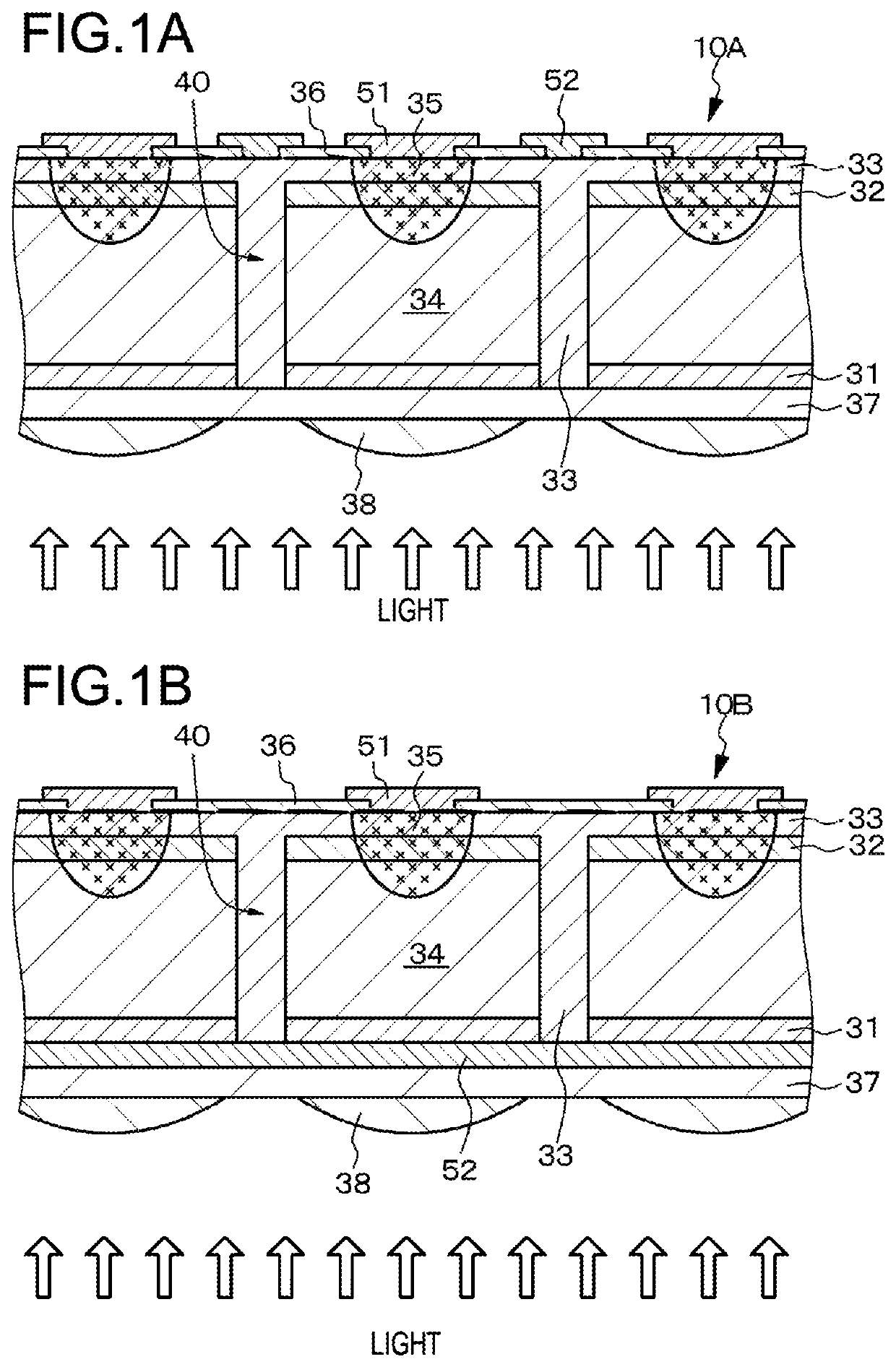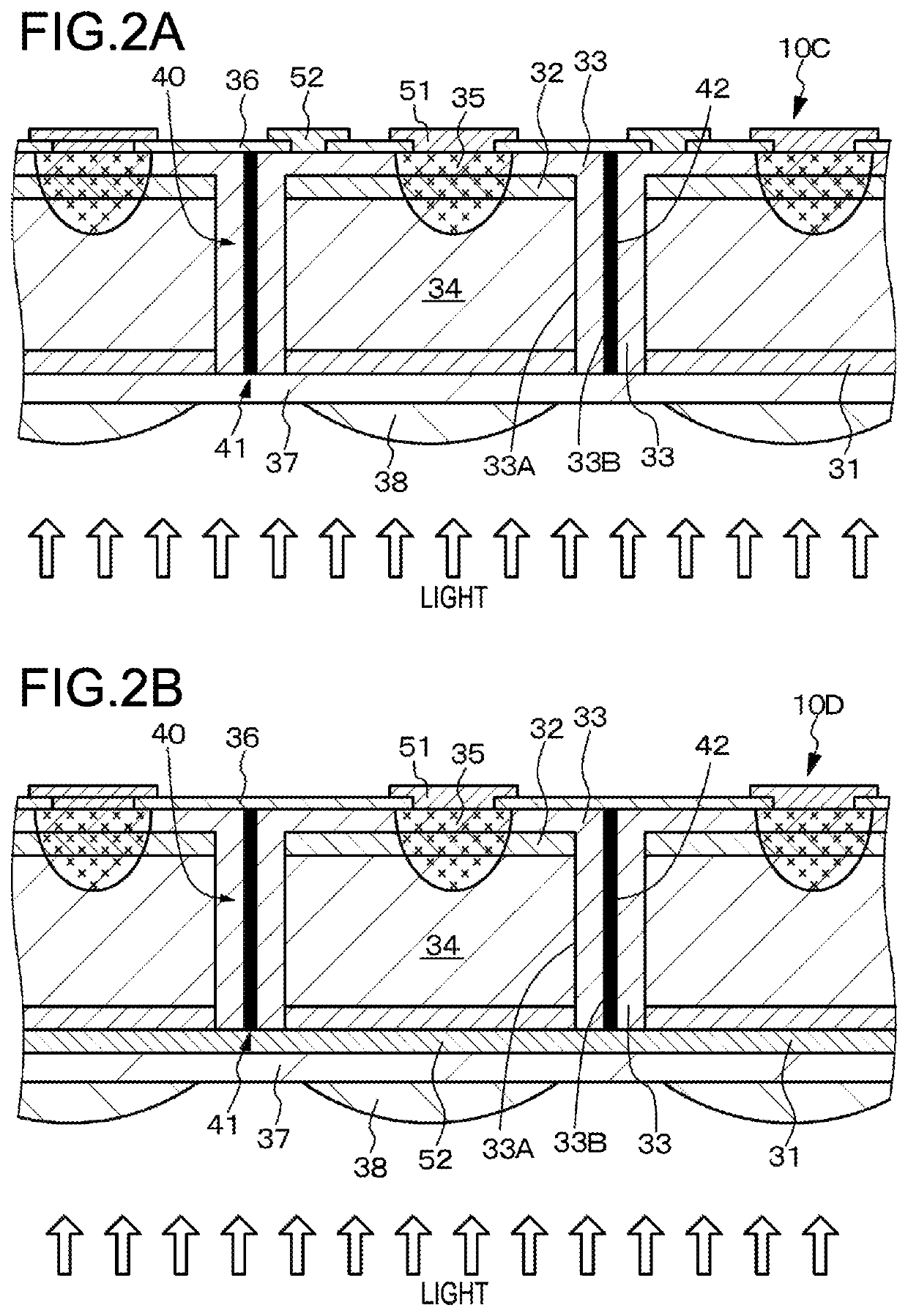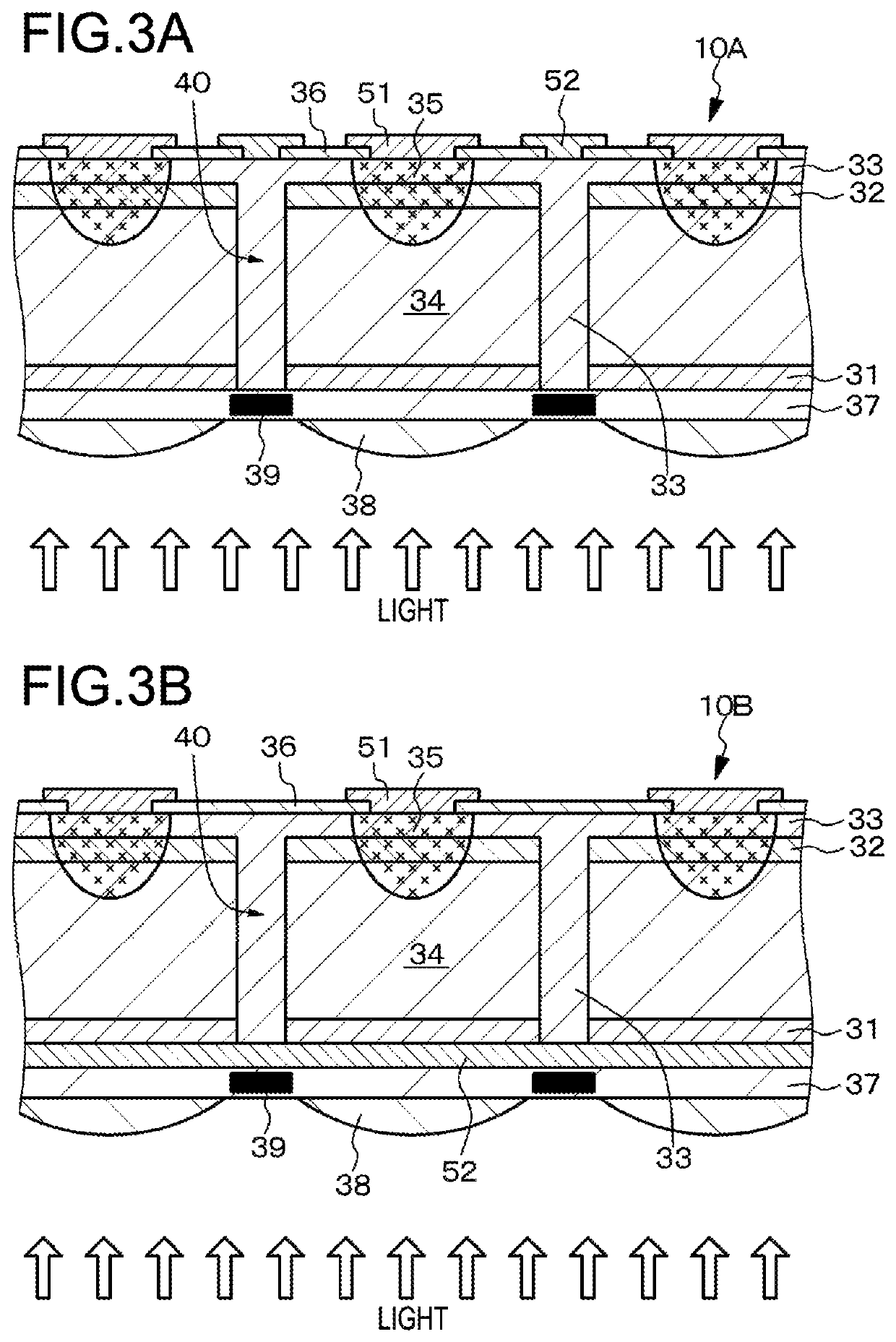Photoelectric conversion element, method for manufacturing same, and imaging apparatus
a technology of photoelectric conversion elements and manufacturing methods, which is applied in the direction of sustainable manufacturing/processing, television systems, and controlled devices, etc., can solve the problem of reducing the sensitivity of the photoelectric conversion elements from red to near-infrared wavelength regions, unable to detect infrared light having a wavelength of 1.1 m or greater in principle, and unable to achieve the effect of less likelihood and reliable address of miniaturization
- Summary
- Abstract
- Description
- Claims
- Application Information
AI Technical Summary
Benefits of technology
Problems solved by technology
Method used
Image
Examples
first embodiment
[0180]A first embodiment relates to a photoelectric conversion element (a light-receiving element, a photodiode, or an imaging element) of the present technology, a method for manufacturing a photoelectric conversion element according to a first aspect of the present technology, and an imaging apparatus of the present technology. FIG. 1A shows a schematic partial cross-sectional view of the photoelectric conversion element of the first embodiment. In addition, FIG. 4A schematically shows the arrangement of a first electrode, a second electrode, a second compound semiconductor layer, an element isolation layer, and a recess part in the photoelectric conversion element of the first embodiment, FIG. 5 schematically shows the connection between the photoelectric conversion element of the first embodiment and a driving substrate, and FIG. 6 shows a conceptual diagram of the imaging apparatus of the first embodiment.
[0181]A photoelectric conversion element 10A of the first embodiment incl...
second embodiment
[0218]A second embodiment is a modification of the first embodiment. FIG. 2A shows a schematic partial cross-sectional view of the photoelectric conversion element of the second embodiment. FIG. 4B schematically shows the arrangement of a first electrode, a second electrode, a second compound semiconductor layer, an element isolation layer, a recess part, and a groove part in the photoelectric conversion element of the second embodiment.
[0219]In a photoelectric conversion element 10C of the second embodiment, a portion of an element isolation layer 33, which is held in contact with the lateral surface of a photoelectric conversion layer 34, is made of a third compound semiconductor material, and the other part of the element isolation layer 33 is made of an insulating material layer or a light shielding material layer 42. That is, a groove part 41 is formed in the portion of the element isolation layer 33 positioned inside a recess part 40 so as to surround the photoelectric convers...
third embodiment
[0224]A third embodiment is a modification of the photoelectric conversion elements of the first and second embodiments and relates to a method for manufacturing a photoelectric conversion element according to a second aspect of the present technology. Hereinafter, a description will be given of the method for manufacturing the photoelectric conversion element of the third embodiment with reference to FIGS. 16A, 16B, 16C, 17A, and 17B each showing a schematic partial end view of a first compound semiconductor layer or the like.
[0225][Step 300]
[0226]On a substrate, a first compound semiconductor layer 31 made of a first compound semiconductor material having a first conductivity type and a photoelectric conversion layer 34 are sequentially formed. Specifically, an InP substrate (film forming substrate) 21 made of InP and having a buffer layer 22 having a thickness of 0.1 μm to 1 μm is prepared. Further, the first compound semiconductor layer 31 having a thickness of 0.1 μm to 1 μm an...
PUM
| Property | Measurement | Unit |
|---|---|---|
| band gap energy | aaaaa | aaaaa |
| band gap energy | aaaaa | aaaaa |
| thickness | aaaaa | aaaaa |
Abstract
Description
Claims
Application Information
 Login to View More
Login to View More - R&D
- Intellectual Property
- Life Sciences
- Materials
- Tech Scout
- Unparalleled Data Quality
- Higher Quality Content
- 60% Fewer Hallucinations
Browse by: Latest US Patents, China's latest patents, Technical Efficacy Thesaurus, Application Domain, Technology Topic, Popular Technical Reports.
© 2025 PatSnap. All rights reserved.Legal|Privacy policy|Modern Slavery Act Transparency Statement|Sitemap|About US| Contact US: help@patsnap.com



